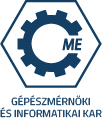| Course objectives: |
| Systematic presentation of the weldability of ferrous and non-ferrous metals. |
| Course content and structure: |
| Cracking phenomena: hot cracking, cold cracking and lamellar tearing. Determination of preheating temperature. Cooling time - t8/5 conception. Weldability of structural steels, creep resistant steels, cryogenic and stainless steels. Effect of alloying elements. Filler material selection. Effect of welding parameters and post weld heat treatment. Detrimental effect of hydrogen in elevated temperature. Grain boundary corrosion. Weldability of aluminium, nickel, titanium and copper alloys. |
| Evaluation method: |
| written and oral exam at the end of semester |
| Required reading: |
| Metals Handbook, Volume 6.: Welding, Brazing and Soldering, ASM International, USA, 1995. Porter, D. A., Easterling, K. E.: Phase Transformations in Metals and Alloys, Second edition, Chapman and Hall, 2-6 Boundary Row, London SE1 8HN, UK 1996.(ISBN 0-412-45030-5).Bhadesia, H. K. D. H, Honeycombe, R. W. K.: Steels Microstructure and Properties, Third Edition, Elsevier Linacre House, Hordan Hill, Oxford OX2 8DP, UK, 2006. |
| Suggested reading: |
| Metals Handbook, Volume 1.: Properties and Selection: Iron, Steels, and High Performance alloys, ASM International, 1990.Sindo Kou: Welding Metallurgy, 2nd Edition, (ISBN: 978-0-471-43491-7)ØYSTEIN GRONG: Metallurgical Modelling of Welding, 2nd Edition, The Institute of Materials, London, UK, 1997 (ISBN 1-861-25036-3) |


